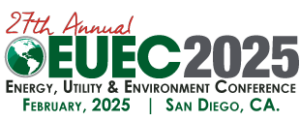UTILITY POLICY, EPA REGS, STRATEGIES, PERMITS, COMPLIANCE
Room 1 (Track A) Wednesday, February 14, 2024
For 25 years, EUEC’s esteemed track has hosted top industry leaders and experts, presenting crucial electric utility regulations. Gain valuable insights, engage in regulatory discussions, and access practical examples and case histories. Equip senior utility executives with compliance strategies.
A1
T & D | Grid | Modernization | Reliability | Decarbonization | Efficiency | Energy Savings
Feb 14 (7:30 – 9:30 am)

Chairman & CEO of TEP and Illinois Power (former)
Panel Chairman
Charlie Bayless, Panel Chairman.
Mr. Bayless has been Chairman, President, and CEO of Tucson Electric Power (UniSource Energy) and Illinois Power (Illinova Corp.) From 1981 to 1989 Mr. Bayless was SVP and CFO of PS New Hampshire. Before that, he was employed by Consumers Power Company as an Attorney, the Director of Nuclear Fuel Supply, and finally Director of Special Corporate Projects. During college, he worked several jobs in line Construction and in Power Plants. Mr. Bayless received his BSEE from WV Institute of Technology, his MSEE, in power engineering, his Law Degree, from West Virginia University, and his MBA from the University of Michigan. Mr. Bayless is a Board Member of the Climate Institute, the West Virginia American Water Company, a Consultant with Insigniam, and a member of the judging panel for the Platts Global Energy Awards. He is a member of the Advisory Boards of the Angeleno Group, ESource, and Energy Impact Partners and a Board Member of TS Conductors.

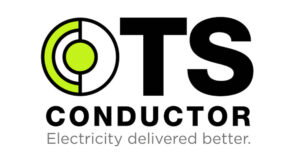
CEO, TS Conductor - Electricity Delivered Better
TS Conductor is Electricity Delivered Better.
TS Conductor is Electricity Delivered Better.
Jason Huang, Founder
The transmission and distribution systems of the world’s power grids are the backbone of the energy transition. As co-founder and CEO of TS Conductor, I’m proud that the TS team and our electric utility partners are unlocking that potential — strengthening grid reliability and resiliency, reducing total costs, accelerating grid modernization and decarbonization, and enabling better renewables integration while handling new loads from EVs and the Electrify Everything movement. TS Conductor provides a drop-in advanced solution for both reconductoring and new line builds capable of handling 3x ampacity and cutting line losses by as much as 50%, compared to traditional ACSR/ACSS conductors. It is Electricity Delivered Better.Before founding TS Conductor, I worked as CEO and CTO with CTC and held senior management positions at several other companies, including BAE Systems Composite Structures, United Technologies, Solvay, and Owens Corning. I hold an MBA and a PhD in Materials Science and Engineering from the Ohio State University. Conductor technology evolution is a story of materials science, and an essential piece of the energy transition. We cannot operate a 21st century grid with 20th century wires. That’s why I founded TS Conductor: to develop advanced conductors that can serve the energy needs of today and tomorrow using the best materials science available.


President and COO, ComEd (former)
Comed
Terrance Donnelly - Comed
A 40 year veteran of the electric and gas utility business, Terence Donnelly recently wrapped up this stage of his career after serving 21 years at PECO of Philadelphia and 19 years at ComEd of Chicago. In his tenure as president and chief operating officer at ComEd, Donnelly was responsible for ComEd’s transformational journey in performance in the areas of service reliability, operations, engineering, construction, safety, customer and employee satisfaction, financial management and advanced grid development, including the implementation of one of the nation’s first utility-operated microgrid clusters in Chicago. He also significantly expanded partnerships with communities, vendors and research including multiple grants with the Department of Energy involving advanced grid operations for a future of electrification and high penetration renewables.
Donnelly orchestrated a massive turnaround for ComEd across a broad range of industry leading performance outcomes. He led the company in improving energy reliability for customers by an unprecedented 70 percent resulting in ComEd being named the most reliable electric utility in the nation for 2023 by PA consulting at their annual ReliabilityOne awards presentation.
Donnelly holds a Bachelor of Science degree in Electrical Engineering from the University of Pennsylvania and an MBA from Temple University.
PECO, a unit of Chicago-based Exelon, is an electric and gas utility that serves the Philadelphia metropolitan area.
ComEd is also unit of Chicago-based Exelon. ComEd is one of the largest urban power grids in the nation serving a population of over 9 million people including the City of Chicago. The company employs more than 6,000 people.


Senior, Vice President, Lotus Infrastructure Global/ Starwood Energy Group
Lotus Infrastructure Global
A2
Utility Policy Regulation Strategies
Feb 14 (10 am -12 pm)


Environmental Justice, Air and Climate Landscape
A1.1 Electric Sector Technology Transition and Emissions
A1._ Environmental Justice, Air and Climate Landscape
John Kinsman - Edison Electric Institute (retired)
This presentation will focus on the evolving environmental justice landscape and also address clean air policy developments affecting the transitioning electric power sector.


Biden EPA's Source Specific Determinations
A1.2 A Look at the Biden EPA's Source Specific Determinations: Trends
Eric Hiser - Jordan Hiser & Joy, P.L.C.
While EPA's large rulemakings such as the Clean Power Plan/Affordable Clean Energy and Interstate Transport FIP get much attention, EPA's New Source Review (NSR) program plays an important role in determining what changes and modifications a facility can make and what the pollution control or enforcement consequences may be of various decisions. This presentation will review recent EPA NSR source-specific determinations in both the permitting and enforcement areas to evaluate trends under the Biden Administration to assist participants in understanding the evolving risks during a period of profound transition in the U.S. energy economy.
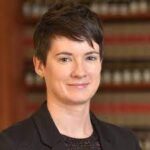

EPA’s Power Plant Carbon Standards Are Built to Last
EPA’s Power Plant Carbon Standards Are Built to Last
Meredith Hankins - Senior Attorney, Climate and Clean Energy Program - Natural Resources Defense Council
EPA’s carbon pollution standards for power plants, to be finalized this spring, follow the legal pathway laid out by the Supreme Court and reinforced by the Inflation Reduction Act. Based on traditional, technology-based standard-setting, the new rules set different standards for baseload, long-lived coal and gas plants, with lesser requirements for plants slated to retire or operate less. These standards will pass muster in the courts. Time for each power company and each state to plan for compliance.


Solutions for Today | Options for Tomorrow
A1.4 Lessons Learned from Major Projects Solutions for Today | Options for Tomorrow
MAJOR TECHNOLOGY DEMONSTRATION PROJECTS AT NETL: PAST & FUTURE
Thomas A. Sarkus
Science & Technology Strategic Plans & Programs, National Energy Technology
Laboratory, U.S. Department of Energy
The U.S. DOE and NETL has co-funded more than 80 major fossil energy and carbon management
demonstration projects since 1980s. The presentation will include Carbon Capture & Storage and
future funding opportunities for major demonstrations and other large-scale projects relevant to
DOE’s fossil energy and carbon management priorities, for example those stemming from the
Bipartisan Infrastructure Law, will be summarized.
A3
Modeling | CAA | Rules | for Electric Utilities
Feb 14 ( 1 pm to 3 pm)


Advances in Regulatory Air Quality Modeling
A2.1 Advances in Regulatory Air Quality Modeling
Gale Hoffnagle - TRC
The presentation will review the changes and advances that EPA and others have made during the last few years. It will address ozone and PM2.5 modeling, ambient air policy , changes to the models and more.


Regional Haze Round Two: Second Verse, Same as the First?
Regional Haze Round Two: Second Verse, Same as the First?
James W. Beers - Partner - Troutman Pepper
The Clean Air Act Regional Haze Program, designed to allow National Park visitors clear views, progresses in ten-year cycles. In the first planning period, EPA disapproved many western state visibility plans, seeking more stringent controls on the largest sources of visibility impairing emissions, resulting in significant litigation. Will the second round involve more of the same? For several reasons explored in this presentation, the second regional haze planning period is likely to be even more contentious than the first.

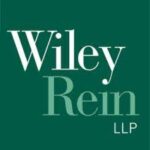
Navigating FCC & FAA Rules for Wireless Systems by Electric Utilities
Navigating FCC & FAA Rules for Wireless Facilities
Navigating FCC & FAA Rules for Wireless Facilities
Madi Lottenbach - Partner - Wiley Rein LLP
| Energy companies increasingly rely on wireless radio systems to meet evolving business communication needs. These systems play a crucial role in managing, monitoring, and maintaining utility equipment and operations, including “Smart Grid” technologies. However, the deployment of wireless radio equipment is not without its complexities. It is subject to laws enacted by Congress, with the FCC and FAA taking center stage in regulatory oversight. These statutory and regulatory frameworks include licensing obligations, operational restrictions, and environmental protection responsibilities.
Madi Lottenbach, a partner at D.C.-based law firm Wiley Rein LLP, will provide an overview of these federal regulatory obligations. Understanding FCC and FAA rules is a strategic imperative for the successful and compliant operation of wireless systems by electric utilities. |


Streamlining the CAA - How It Can Help The Administration
A3.5 Streamlining the CAA - How it can Help the New Administration with its Regulatory Agenda
William Smalling - The Law Offices of William Smalling
• President Joe Biden on Jan. 21 directed agencies to examine dozens of Trump-era rules, including carbon emissions, clean air rollbacks, and Clean Air Act rules on science and costs.
• Any bold standards Biden has in mind to stem emissions from industry through the Clean Air Act will almost certainly get challenged in court.
• The cycle of rulemakings followed by years-long lawsuits is a signal that the Clean Air Act needs to be amended to give the President more direct authority.
• President Biden may have to choose between innovative actions or traditional "nuts and bolts" regulation under the statute in order to avoid defeat in a conservative Supreme Court skeptical of broad EPA powers.
• Likely a lot harder to do more flexible, ambitious and innovative programs under these older laws because a conservative SCOTUS may be predisposed to overrule such programs.
• This proposal advances an alternate solution of simplification and modernization of the CAA.
• The current CAA is a virtual field of landmines set to disrupt new, more flexible, ambitious and innovative programs.
• The complexity of the 1970, 1977 and 1990 versions of the CAA make challenge of new control programs easy.
The current watch list of air issues on Biden’s agenda are:
• Power Plant Carbon Rules
• Clean Air Act Analysis
• 'Once In, Always In’
• National Ambient Air Quality Standards
• Methane
QUESTIONS
1. Will the “New” CAA reduce the amount of pollution controlled?
Answer: No. Emission reductions have averaged nationwide about 1.5% per year since the 1970 CAA. Additionally, GHGs emission controls are being added to the “New” CAA.
2. Will the “New” CAA reduce red tape?
Answer: Yes.
3. Will the “New” CAA reduce jobs in the “Environmental” Professions.
Answer: Possibly, but job growth in other professions will more than offset any Environmental Profession reductions.
A4
Utility Strategies | T&D | Poles | Green Energy |
Feb 14 ( 3:30 - 5:30 pm)
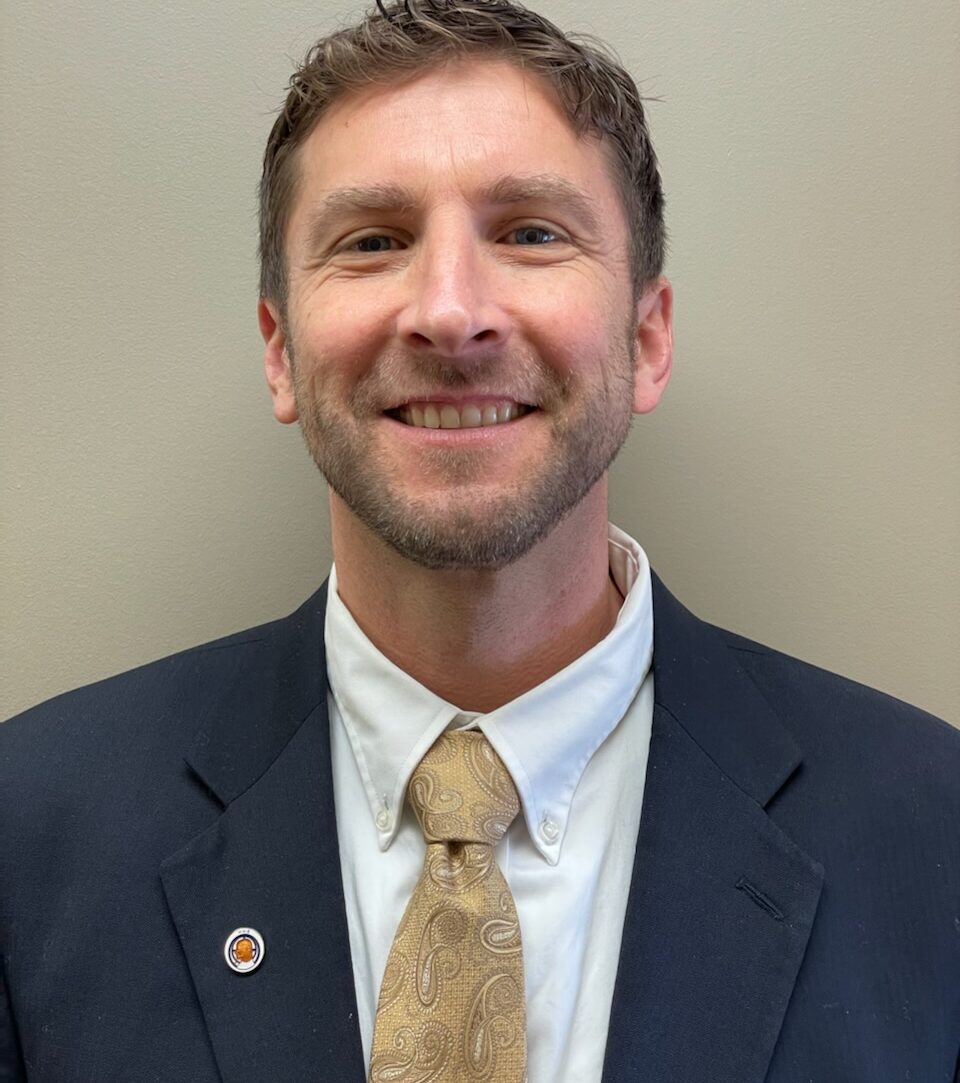

Reduce Environmental Impacts Of Overhead Structures
E1.3 Reduce environmental impacts of overhead structures
Chad Hering - Bell Lumber & Pole Co.
The materials you use impacts the environment in different ways. Utilities with carbon reduction initiatives should record and consider different materials carbon footprint in their project evaluations. We will demonstrate how utilities can calculate the amount of carbon sequestered and carbon dioxide (CO2) removed from the atmosphere by utilizing wood utility structures. This information can assist a utility in achieving its commitment to the environment using scientifically derived information.


Environmental Permitting and Siting for Renewable Utilities
Environmental Permitting and Siting Considerations for Utility-Scale Renewable Development
Chris Jorgensen - Olsson
While a number of factors contribute to successful development of a renewable project, few factors are as critical as having a proven and effective strategy for site selection. This presentation will demonstrate how a successful strategy for project siting can strengthen the financial position of the project while avoiding or limiting resistance to the project. The presentation will explain how to identify and understand key project parameters, avoid environmental constraints, and mitigate risk through project visualization and stakeholder communication. The presentation will also address the importance of identifying state and local permit requirements and understanding local stakeholder considerations. Finally, the presentation will demonstrate the importance of using a cross-functional team of environmental scientists; geotechnical structural, transmission and distribution and civil engineers; land acquisition experts; construction managers; and community outreach professionals. Lessons learned from successful project execution will also be shared.


When Going Green Turns to Red
When Going Green Turns to Red
Anthony Cirillo - SunEast Development
Over the past decade it has become clear that a confluence of ‘stuff’ has permeated and corrupted the sensibilities of the U.S. population in general, and in particular endangers its power industry in much the same way that it has already infected the European energy industry. This ‘stuff’ is not gray matter, but green matter --- where nothing but green matters. It seems that once the ‘green’ monicker is attached to a cause, a piece of legislation, an action or inaction, a person, place or thing, etc. it must be embraced, and if queried, the inquirer must be silenced rather than engaged in rational, constructive dialogue. However, there are recent past and current emerging signs that this green-way or no way, is turning red.For aesthetic reasons the NIMBYs and the land use/open space factions are seeing red when windmills and solar farms are being permitted along their vistas and in their neighborhoods. For partisan reasons, politicians and regulators are drowning, in red tape, those power generation forms they do not deem green enough while pursuing their party’s self-styled green initiatives. Initiatives creating hundreds of billions of dollars of subsidies and incentives pushing fiscal budgets, now over $30 trillion, further into the red while concurrently making the taxpayers see red as the ballooning national debt hits their wallets in the form of inflation and higher energy bills. Animal and human-right advocates are attaching a blood-red stigma to the sudden rise in unexplained whale and porpoise beachings and mortalities, in the vicinity of concentrated sonar-based ocean bathymetric and geotechnical surveys for offshore wind farms, and to the human injuries and deaths associated with third-world country mining practices for rare earth battery metals and minerals, respectively. Compounding the latter, the convoluted logic of scarring the earth with mining and refining operations to save it, often done in impoverished and remote parts of the globe, makes social justice supporters red-hot as the toil and wares of the less-fortunate ultimately wind up in countries able to afford being ‘green.’ To dispel the red-herrings and incessant code-red apocalyptic alarm broadcasts made under the pretense of green energy, this presentation will pose sound technical, measured, and reasonable approaches to socially protect both the environment and the reliability of the ever-evolving U.S. power industry.


Reimagining Grid Sustainability: Restoring Utility Poles for a Resilient Future
Reimagining Grid Sustainability: Restoring Utility Poles for a Resilient Future
Davoud-Zamani - GridWrap, Inc.
GridWrap Inc., based in San Diego, is a pioneering cleantech company led by women. They focus on advancing and commercializing patented technologies such as the innovative Composite WiRe Wrap and Pole Wrap. This application highlights the groundbreaking Pole Wrap technology, a transformative solution designed to enhance the structural resilience of utility poles using a unique composite wrapping method.Utilities and grid operators face numerous complex challenges that require strategic grid infrastructure planning. The rise in extreme weather events, such as wildfires and droughts, has led to a concerning 50% increase in grid disruptions over the past decade. At the same time, the utilities region has experienced a 45% surge in weather-related outages. As the US advances in its renewable energy transition, solar and wind power penetration has reached an impressive 40% within service territory. However, this shift necessitates a significant 30% growth in power capacity to manage renewables' intermittent nature and accommodate rising energy consumption. Furthermore, aging grid infrastructure and utility poles in the utility area pose considerable reliability risks, as over 60% of components now exceed their intended lifespan.The projected load growth, grid aging, and increasing intensity and frequency of extreme weather events necessitate more frequent upgrades to Transmission and Distribution (T&D) infrastructure – often involving assets with remaining useful life. In several cases, capacity-enhancing projects demand broader foundational investments. Pole Wrap emerges as an efficient solution for quickly enhancing grid capabilities without disruption. This technology boosts utility poles' load-bearing capacity, potentially deferring new pole and line construction by revitalizing existing assets. Our engineering design services support extending asset usefulness through stress engineering design and finite element analysis, allowing for more cost-effective partial upgrades rather than full-scale construction.
